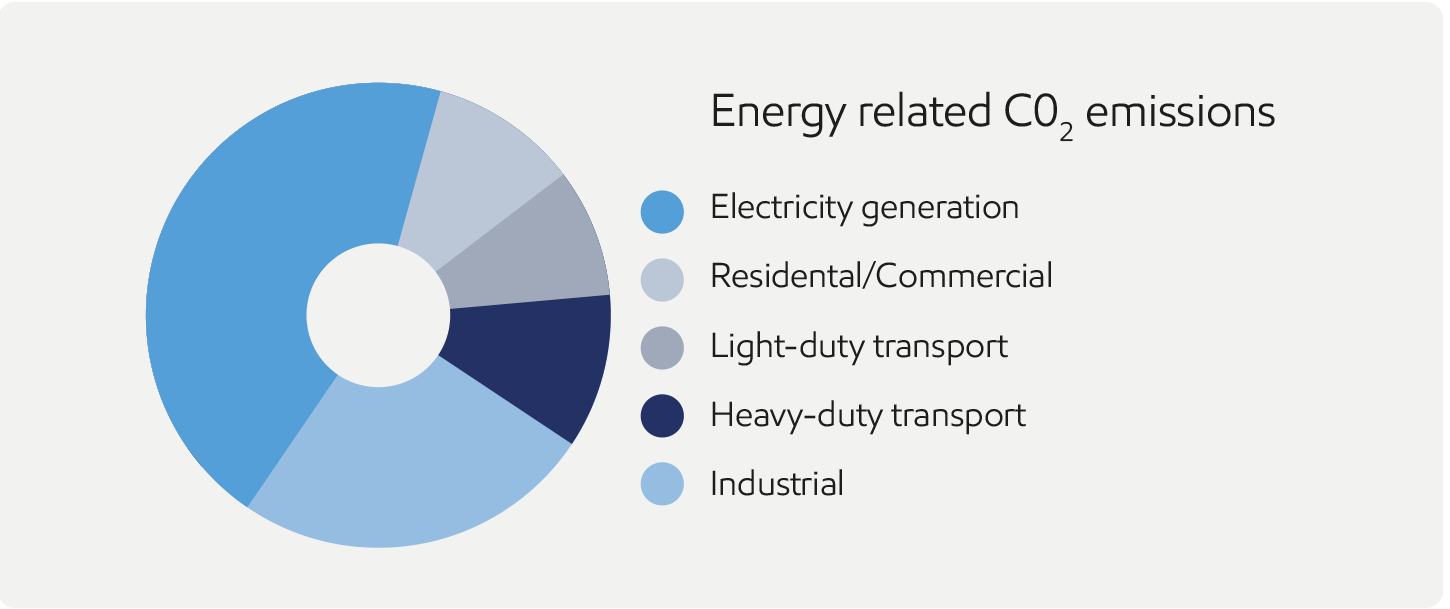CFC technology and EU’s vision for Carbon Capture and Storage
The European Commission has identified carbon capture and storage as as an important part of the EU decarbonization effort. The breakthrough CFC technology has the potential to play a key role in global emission reduction.
Current market scenario
Currently, carbon capture and storage (CCS) technology is gaining significant traction. Industries worldwide struggle with the urgent need to reduce carbon emissions. The International Energy Agency (IEA) as well as the United Nations Intergovernmental Panel on Climate Change (IPCC) emphasise carbon capture and storage as key to reaching global emissions goals. According to the IEA Net Zero Emissions by 2050 Scenario, over 7.6 billion metric tons per year of CO2 will need to be captured and stored by 2050 to reach a net-zero future. In contrast, the current global capture capacity is about 40 million metric tons of CO2 per year. The agency points out that achieving net zero will be virtually impossible without carbon capture and storage.
ExxonMobil Europe president Philippe Ducom, highlights that 80% of energy-related global CO2 emissions come from two pivotal sectors crucial for society: industry (including electricity generation) and heavy-duty transport.

[Source: https://energyfactor.exxonmobil.eu/science-technology/reduce-emissions-industry-transport/]
CCS is a proven technology for mitigating greenhouse gas emissions across various sectors. With more than 30 years of experience in the field, ExxonMobil is a leader in CCS, having captured more CO2 than any other company in the world. With the capability to capture more than 90% of CO2 emissions at power plants and industrial facilities, broad CCS deployment could put the world on the right path toward a lower-carbon energy future.
As the technology becomes widely deployed, most experts agree that CCS technology will play an important role in a lower-carbon energy.
In this context, the European Commission and national governments are supporting CCS initiatives through incentives, subsidies and regulatory frameworks to encourage its adoption. Thus, this is fostering innovation and advancing technological developments to enhance efficiency and reduce costs.
Despite these positive trends, challenges remain including high initial investment costs, regulatory uncertainties, and public acceptance issues. However, progress in CCS technologies, along with changing market conditions and an increasing dedication to address climate change, suggest a promising outlook for the expansion of CCS deployment in the years ahead.
The International Energy Agency states that “if all announced CO2 capture capacity is realised and the current growth trend continues, global capacity could reach net zero emissions levels by 2030.” In line with this, the development of CO2 storage infrastructures will be essential for effectively reducing emissions and progressing towards these goals, complementing other emission reduction technologies.
Sources
- https://energy.ec.europa.eu/topics/oil-gas-and-coal/carbon-capture-storage-and-utilisation_en
- https://www.iea.org
- https://www.ipcc.ch
- https://www.iea.org/reports/global-energy-and-climate-model/net-zero-emissions-by-2050-scenario-nze
- https://www.iea.org/reports/ccus-in-clean-energy-transitions
- https://energyfactor.exxonmobil.eu/science-technology/reduce-emissions-industry-transport
- https://energyfactor.exxonmobil.eu/science-technology/7-things-ccs/
- https://www.iea.org/reports/ccus
